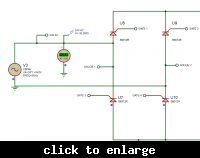Okada
Banned
Because in simulation if I use one AC voltage source then it is not simulating. It then works as controlled half wave rectifier. the negative half is not rectified.
In simulation for RL load the 570V spike is making the SCR to conduct even before the gate is triggered for firing angle greater than 90 degrees. The spike is occuring at exactly 4.9ms from Zero Cross. How to eliminate the spike ? Should I use MOV ?
In simulation for RL load the 570V spike is making the SCR to conduct even before the gate is triggered for firing angle greater than 90 degrees. The spike is occuring at exactly 4.9ms from Zero Cross. How to eliminate the spike ? Should I use MOV ?





